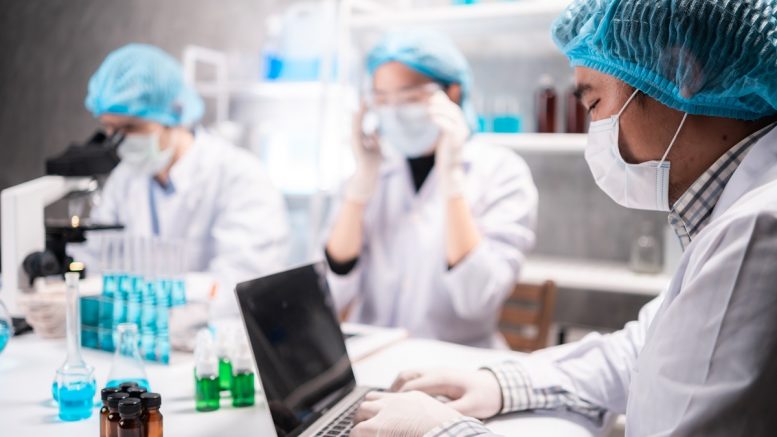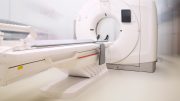The updated EU GMP Annex 1 requirements, designed to protect and increase confidence in the sterility of medicinal products, are significant and wide-ranging, spanning the Quality system and the manufacturing process itself. Anna Cluet of Rephine offers some practical steps to address the requirements.
In August 2022, revised EU GMP Annex 1 requirements related to the Manufacture of Sterile Medicinal Products were issued, starting the clock for compliance. All but one of the new provisions must be fulfilled by August 2023. The revised expectations span three key areas, which are set out below along with practical advice on how to fulfil the requirements.
Refining the Contamination Control Strategy (CCS)
Developing and refining the Contamination Control Strategy (CCS), which must ensure that consistent standards are upheld end to end across manufacturing operations, will require substantial resources – both now and on an ongoing basis. Here’s how to break that down:
-
Build a team
Defining the CCS will require the involvement of a number of different stakeholders, because the scope here transcends any one department. These include knowledgeable individuals from production, engineering, maintenance, quality control, the microbiological department, and quality assurance.
Between them the team must have technical knowledge of the facilities, the equipment (e.g. heating, ventilation and air conditioning (HVAC), and water generation and distribution systems), the manufacturing processes and the workings of the production department.
-
Document a formal contamination control policy
Once a multi-disciplinary team has been assembled, the next task is to prepare the policy, with input and approval from all stakeholders and the Quality director. This is important, as the contamination control strategy will by definition be wide-ranging, and an evolving entity that is honed as data is collected and analysed over time.
Policy documentation should set out how, when and how often data will be collected, evaluated and used. It is advisable to have an overarching policy document, then local versions and associated risk assessments for each utility and set of equipment; processes and cleaning; and raw materials and their treatment, to identify critical points from a Quality perspective that will need to be measured and monitored.
-
Identify & manage relevant risk
For each of the ‘components’ above, there will need to be an individual risk assessment to identify which areas are critical aspects from a quality point of view; the control measures; and the monitoring systems and data that will provide assurance that everything is working as it should.
These local risk assessments and the data they give rise to over time will feed into the CCS strategy over time, so that it maintains its efficacy and robustness. For this reason, all of this activity must be re-evaluated every year. The central policy document may not change, but local implementations, individual risk assessments, and as a consequence the global strategy, should be re-evaluated annually in line with the emphasis of Annex 1 on continuous risk management (see below).
Minimising scope for contamination
Facilities-wise, the revisions to EU GMP Annex 1 require more proactive measures to remove direct human involvement in critical areas such as cleanrooms, through the use of restricted access barrier systems (RABS), isolators and robotic systems. Investments here will help reduce the burden of CCS and Quality risk management, too, building confidence through the minimized scope for contamination.
-
Considerations for existing plants
In existing plants built some years ago, traditional cleanrooms are commonly still in use. These may need to be updated to the latest facilities such as restricted access barrier systems (RABS), which must be in put in place anyway in a new facility or for a new production line.
Supporting such decisions will be the contamination control strategy, and the ongoing risk assessments that feed into this. Without strong controls and measures – and the ability to demonstrate that there is no risk of contamination to the product either from the environment or associated working practices – it will be difficult for manufacturers to justify continued use of traditional cleanrooms. One measure that will be important here is having QA people on the shop floor to keep checks on working practices.
-
Requirements for new plants/production lines
In the case of a new manufacturing plant, or a new production line within an existing plant, Annex 1 requires that companies apply the latest cleanroom technology and that human intervention is removed wherever possible.
Engineering and maintenance people, working closely with Quality Assurance, will need to be involved in the design of the new equipment, in collaboration with production representatives who can transfer knowledge of the manufacturing process. A key task here will be to identify any gaps in provision (against Annex 1 specifications) that could undermine the new contamination controls and incur new risk.
Lifecycle approach to continuous quality improvement
While Quality risk management in itself is not a new expectation for drug companies, there is heightened emphasis now on consistency across all plants and processes, and the importance of periodical reviews to ensure ongoing vigilance and enable continuous improvement.
One of the stand-out requirements under the new Annex 1, is quality improvement over time – ultimately across the lifecycle of the product. This in turn suggests a cycle of re-evaluation and updating of local policies and overall strategy.
-
Applying quality risk management on an ongoing basis
Depending of the results of periodic re-evaluation – if something changes or there are variations in readings for instance – the relevant risk assessment will need to be updated. This is to verify whether the change has introduced new risks, or whether new control measures or monitoring systems are indicated, or must be accounted for, linked to be the component being evaluated.
-
Using risk assessment tools
Annex 1 also requires the use of formal risk assessment tools to justify and evaluate a given activity. Risk assessment tools can help teams identify the critical points of the room where there is high risk of contamination, and determine when and how often samples should be taken, while providing appropriate justification for these decisions.
Compliance clock is ticking
The EU GMP Annex 1 requirements related to the Manufacture of Sterile Medicinal Products affect both the Quality system and the manufacturing process. The clock is ticking, with compliance for most new provisions required by August 2023. A wide ranging review across the three key areas highlighted should be implemented urgently to identify the correct actions needed to ensure compliance in good time.
About the author
Anna Cluet is a highly experienced pharmaceutical consultant and senior auditor at Rephine. Rephine is a firm of deeply experienced GMP auditors which proactively help pharmaceutical companies around the world with their supply-chain quality assurance. More at www.rephine.com





